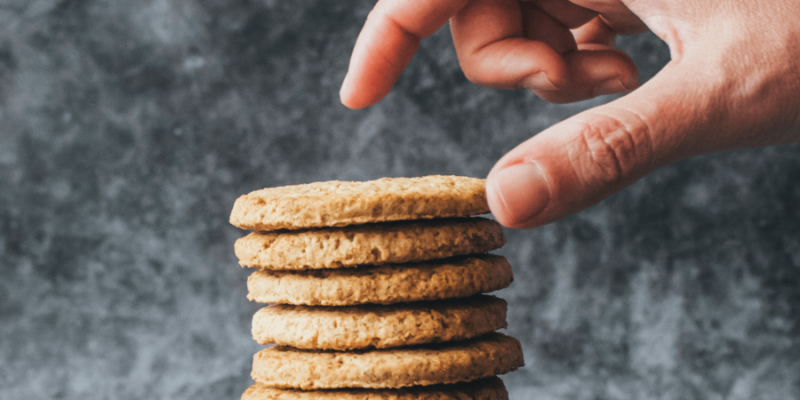We can't all exercise our way into that ideal body shape. Some of us can, but many of us are limited by the geometry of our bones.

Sports Nutrition is Going Deep
According to an article by Trevor Wong recently posted on the NBA.com website (scroll down to “Kobe Bryant’s Diet”), Kobe feels that his continued age-defying performance has more than a little to do with his diet.
It’s well known that Kobe Bryant has always thought with the precision of a scientist, and for years he has brought that logic to bear when it comes to the foods he choses to eat.
Kobe Attributes Energy to Diet, in Part
“I feel like I can run all day long. A lot of that has to do with diet and being committed to it, and watching what I eat.”
If I have anything to say about it, we are seeing the beginning of a trend—for those players, coaches and trainers who are willing to think outside the box for the benefit of the team—based on things like source (including animal feeding and treatment), freshness and careful preparation the healthiest cooking techniques.
This article is continued below...(scroll down)

















It helped. I feel great.
"It’s helped. I feel great."
Kobe Bryant
NBA baskeball player

This has been life changing
"Let me tell you this has been life-changing. I have all of her books, in audible and ebooks! I have gotten rid of all the hateful 8 oils. I have trained my body to eat its own previously toxic body fat. Download that pod it's a game changer!"
Megyn Kelly
Broadcaster / The Megyn Kelly Show

Life changing
Deep Nutrition changed my life.
Jesse Watters
Fox News Primetime host
Saved my life
I would like to thank you for literally saving my life. Back in February, I had to be hospitalized while on vacation in Phoenix with an A1C of 11% and had to start taking 2 types of insulin and 2 other meds. I read the Fatburn Fix in April, and followed the program to a tee, and I’m down by 15 pounds, 6.8 A1C, and only one once weekly diabetes medicine. Prior to reading the book, it was almost impossible for me to lose weight as a diabetic.
Leontyne Tompkins
I feel free
For the last month, I have really been reading all labels on everything. I have completely remove those 8 oils you talk about. I must tell you, I feel great! I have more energy and I am now 197 lbs (have always been around 205 to 210lbs). I eat potatoes with real butter, grass fed steak, pasta with the right toppings. I eat everything! I seem to crave less sugar. I love it!
Robert Kirkendall
I feel so much better
I had terrible aches and pains everywhere in my body, my hands, shoulders and knees. I feel so much better and the way I feel is motivating me every day! Thank you
Mike Deb Wootan Burcin
Better than ever
I am an anesthesiologist in Orlando and a huge fan of both of your books! I have been incorporating your principles for the last 10 months and feel that my health is better than ever.
Marnie Robinson, MD
My allergies disappeared
The biggest difference for me (and a surprising one) is that my allergies have almost completely disappeared! This is a big deal for me, because I’ve had allergies most of my life and they have often affected what I do which is a teaching music in [a public school district]. In general, I feel much better and have more consistent energy throughout the day.
Erica Turrell
Heart Palpitations have Stopped
I’ve lost 20+ pounds (also fasting 16-24 hours daily) and haven’t had palpitations except for one occasion — I had a mini bag of Fritos for the first time in July. And, I feel better now on a daily basis than I ever did all through college.
Mike Wright
Deep Nutrition and Fatburn Fix reader

I’ve lost over 50 pounds
I’ve lost over 50 pounds. I’m 56 years old. Cutting processed food and unhealthy fats from my diet was one of the first things I did on my health recovery journey...I went cold turkey off the bad oils. Emptied my pantry into the trash and just started eating real food
Mitzi Wilkinson Champion
Knowledge I didn’t know I needed
Your Fatburn Fix book is amazing, my friend. Thank you! I’m an Functional Nutritional Therapy Practitioner and I know my stuff. This is the extra layer of knowledge I didn’t know I needed. Well done!
Jennifer Dillman
Fatburn Fix reader
Lost a solid 20 lbs and my bloodwork is great
I have lost a solid 20 lbs and my bloodwork (after 3 months of eating your way) was even better! I was metabolically healthy (per your book) before I read your book, but barely. Lowering my weight, sealed the deal! I have been talking about you and your book to anyone who will listen...Thank you for all you’ve done and what you continue to do! You are changing lives for the better!
Missy Cramer
FatBurn Fix reader
Lost 20 lbs I could never shed
I love your Fatburn Fix! Has helped me so so much! I have had the dreaded weight all my life - 20 or so pounds I could never shed. I have lost that now. I only eat 2 meals a day lunch and dinner with a glass of milk or cappuccino around 4 to hold me over. No snacking and not bad oils. It has been the key to unlocking my fatburn. I work out in the am and believe I am burning fat for energy not from food!
Lauren Smith
I feel great
My waist is four inches smaller. I feel great and many of the minor aches and pains that I had (knees and lower back) are gone. Also, my muscle tone is amazing, even though I have not increased my workout routine.
Richard Janelle
Completed Dr Cate's online course

The go-to for strength and conditioning coaches
Whenever I advise my clients about eating to perform I go straight to what I have learned from Dr. Cate. Her book Deep Nutrition has become the go-to for strength and conditioning coaches across the country.
Kent Matthes
Major League Baseball Agent with WME Sports

Dismantles the lie
Dr. Cate dismantles the lie that seed oils are healthy, which may the biggest lie about nutrition and health because it’s so insidious.
Ken D Berry, MD
Author of Lies My Doctor Told Me

She knows the chemistry
Dr. Cate alerts us to the harms of seed oils and she’s convincing because she knows the chemistry better than anyone.
Dr. Drew Pinskey, MD
Globally recognized internal medicine and addiction medicine specialist, media personality, LoveLine Host, and New York Times bestselling author

No one is better at communicating nutritional truth
Dr. Cate has had the single greatest impact on how we talk to people about fueling for both performance or durability. While we all are a little unique, the foundational principles of human nutrition are immutable. If you are looking to create a more durable, resilient body, no one is better at communicating nutritional truth than Dr. Cate.
Dr. Kelly Starrett
Physiotherapist coach and New York Times and Wall Street Journal bestselling author

Highly recommend The Fatburn Fix
Dr. Shanahan has had a significant impact on my practice of medicine. I am known as a Low Carb Doctor, but I never really appreciated the negative effects of processed seed oils on the health of my patients. I highly recommend The Fatburn Fix to my patients and have a loaner copy in my waiting room. It is amazing how quickly blood sugars and overall health improves with cutting seed oils. It is not just about the carbs!
Dr. Brian Lenkzes, MD
CEO of LowCarbMD San Diego, co-host of Low Carb MD Podcast and host of Life's Best Medicine Podcast

Respected in the sports world
Dr. Cate reordered my diet when I was with the L.A. Lakers, and the benefits, for me personally, were felt immediately and have served me to this day. I’ve come to take real food so seriously I started a small family farm. I know of no M.D./nutritionist more respected in the sports world than Dr. Cate Shanahan.
Chris Kaman
NBA Player

Brought seed oil issue front and center
Cate brought the seed oil issue front and center. Healthy fats matter. So much so that I created an entire product line to swap out bad fats with good.
Mark Sisson
Founding Father of the Primal/Paleo Movement

Optimal health starts with food
If you want to understand how optimal health starts with food, start with Dr. Cate. Her book Deep Nutrition leaves you with an appreciation of the profound relationship between our genes and the planet, inspiring us to be good shepherds of both.
Dallas Hartwig
Attribution author of The Whole 30

Helped me with endurance
Deep Nutrition really helped me with endurance. I started to feel better as a player. I was able to run more, I was able to be more active …and I just decided to keep going with it to this day.
Dwight Howard
NBA Player

Silver bullet for me
Dr Cate’s teachings helped me lose 60 pounds like it was nothing. It was like a silver bullet for me.
Paul Grewal, MD
Dr Grewal Internal Medicine, MD, author of Genius Foods

Radically improve your health…
Dr. Shanahan has provided a solid reference that deserves a place in the library of anyone who is seriously interested in nutrition. Her perspective on the vital role that healthy fat has in our diet is novel and, if implemented, can radically improve your health.
Dr. Joseph Mercola
Author of Fat for Fuel and Founder of Mercola.com

Pull up a chair…
I have based my work on the idea that getting the right kinds of healthy fats into your body and avoiding the worst fats is essential to optimal health. I've interviewed dozens of the world's top experts about this, and I know of no one who speaks more eloquently on this topic than Dr Cate. If she’s talking fats, pull up a chair. Take notes.
Dave Asprey
Author of the Bulletproof Diet
The key to unlocking my fatburn
I love your Fatburn Fix! Has helped me so so much! I have had the dreaded weight all my life - 20 or so pounds I could never shed. I have lost that now. I only eat 2 meals a day lunch and dinner with a glass of milk or cappuccino around 4 to hold me over. No snacking and not bad oils. It has been the key to unlocking my fatburn.
Lauren Smith
Saved my life
I would like to thank you for literally saving my life. Back in February, I had to be hospitalized while on vacation in Phoenix with an A1C of 11% and had to start taking 2 types of insulin and 2 other meds. I read the Fatburn Fix in April, and followed the program to a tee, and I’m down by 15 pounds, 6.8 A1C, and only one once weekly diabetes medicine.
Leontyne Tompkins
> Tears of joy
I'm crying tears of joy and appreciation for all you've done for me and my health! Without Deep Nutrition and Fatburn Fix, I would literally still be in the vicious cycle I'd been fighting all my life! In a nutshell - I am no longer a compulsive overeating addict suffering under the crushing 'thumb' of all food and alcohol.
Penni Wicks
Intense Nutrition for Intense Performance
Taking a more comprehensive approach toward better eating means one thing: More nutrition per bite—or as I call it, nutrient intensity. That means smart sports nutritionists will start to consider the benefits of reducing the kinds of empty calories that do little more than elevate blood sugar, which is to say reducing starchy foods and sweets.
“The current science reverses the pyramid, the base of the pyramid is on the top,” Says Gary Vitti, head Head Athletic Trainer. “We’re not telling them to just eat fat – it has to be the right kind of fat. Pasture-grazed beef and products from that; you can eat butter, but it has to be pasture-fed.”
Vitti had many insightful things to say about cutting-edge performance nutrition. Whoever he’s working with (wink wink) must be pretty smart!
beefbutterdietintense nutritionintense performanceKobe BryantmacronutrientsNBAnutrient intensitynutritionpasture fedsportssports nutrition
Dr. Cate
With over two decades of clinical experience and expertise in genetic and biochemical research, Dr. Cate can help you to reverse metabolic disease and reshape your body.
Related Posts
This Post Has 15 Comments
Comments are closed.
Note: Please do not share personal information with a medical question in our comment section. Comments containing this content will be deleted due to HIPAA regulations.



[…] Part of that changed diet and those healthy eating tips come from Dr. Cate Shanahan, a team consultant who has her own practice in Napa Valley. Pasture-fed foods – pasture-grazed beef from a pasture-fed cow, eggs from a free-range chicken (not a cage chicken) – are just some of the main staples of Bryant’s diet. Sugars, specifically anything with corn syrup, should be avoided, and the intake of carbohydrates has been scaled down, consumed in moderation. Article on Fit For Life by Trevor Long and Post by Dr. Cate Shanahan […]
i purchased grass-fed, raw milk for a while and it costs $9 per half gallon. however, the grass-fed milk that happens to be pasteurized sold by Organic Valley is more like $6. why do you think there is such a difference in price considering it should be the same product before pasteurization?
Good question. My guess would be it’s got to do with the fact that distribution is more complicated with raw milk products for legal and shelf-life related reasons.
Thanks for the response. In fact, Organic Vally grassmilk is more like $5 for a half gallon. I can’t imagine the distribution is much more complicated for Organic Pastures, all of which leads me to believe there is a bit of price gouging happening. I also can’t believe shelf-life concerns would make it nearly 100% more costly. Very disappointing.
Hi, thank you so much for sharing your knowledge and trying to be such a good influence on health for everyone. I am in the Military and work a streanous job working from 14-16 hours a day at times. Also, many of us attempt to work out after or before work. We are up in the sun in the heat on the Flight Deck for hours at a time. Energy drinks are consumed by the dozens, along with pre-work outs and supplements. I have to be honest, i was one of these people devouring energy drinks and protien shakes and pre-workouts. It was hard to sleep, and now I feel like my body has taked its toll. Im in pain all the time, and hardly have the energy i need just to make it into the gym, or be as efficient at work. I am really trying to make a step forward in showing that this is not healthy, and there is better ways. Although getting such high quality food out in the middle of the Ocean is not very likely. Our fitness, and well being is. its important enough to make attempts at doing everything we can to do better. Now i am just a small fish in a big ocean, but, i am not concerned about that. I am reaching out, to try and take a leap, the way Kobe has done for athletes. Knowledge is power, and its time we start focusing our knowledge on things more then just technology, and entertainment. We need to start with the people! I am going to invest in your Book and am going to try and effect some change in the Navy. I just wanted to say thank you for your hard work. And, thank you for sharing it with us. If you have any suggestions on how to aquire more information and the resources, I would really appreciate it. Or if you would like to get involved even better, as in, i do not want to take away from all your hard work, or take any of the credit from you and other specialists.
Thank You and Be Blessed,
ABH2 Bramlett, Michael
United States Navy
Jacksonville, Florida
[…] Even Kobe Bryant’s doing it. […]
Hi Dr Cate,
Can you spell out please why powdered protein (eg. whey protein, not soy protein) used in workout shakes is not a great choice. I’ve been primal/paleo for over a year, but it seems that much of the community uses protein powder to increase protein intake for exercise. They also make reasonable use of vitamin powders/fake products too, I find, such as greens supplements. I find it does make a difference to drink some protein powder in water before or during resistance exercise (energy does not drop, but seems to increase). I’ve been wondering if drinking bone broth would be a beneficial replacement. Are these powders really so bad, and why?
Good question and one that few people ask. I’ll be discussing in a future publication.
These article facinate me as a mama to teen boys…particularly teen boys who LOVE sports and find role models in these athletes. What a great example for boys who’s eating habits become FAR from ideal when they become teenagers and spend more meals away from home. I’m curious… do you know where I might find the red, yellow and green lists Coach Vitti talks about in this quote “Vitti acknowledges they have created, not only for Bryant, but also all their players, food groups that are red, yellow and green. ” This link http://www.nba.com/lakers/community/1213_fitforlife_features It seems like a great way to show kids what they should be eating when they begin choosing foods for themselves. I apprecite you sharing this link. It’s been so helpful. My boys were QUITE interested!
This is really exciting. I would love to see a more detailed write up about what Kobe does and does not eat. I would find it extremely helpful when it comes to feeding my son (I’m sure other parents would as well). He’s at an age now where he begs to eat what his friends do (empty calories). He plays basketball, loves the lakers, and idolizes Kobe Bryant. I’m excited to have a role model for him that practices the kind of real food nutrition that I want him to have.
Thanks for posting this Dr. Cate!
For more insights, check out the (truncated) news segment with Lakers Head Strength and Conditioning coach Tim DeFrancisco and email them to make sure he gets invited back!
This is FANTASTIC! I have 4 sport loving sons and I’ll be showing them all copies of this article! Thanks for sharing! We’ve been eating a WAPF/Paleo whole food diet for 10 years and can’t believe the difference! I found a link to the Kobe story at another site and saw your name! Yay Dr. Cate!
Good to see the media around his diet rather than all the high-carb athlete diets! My sister does crew, and she sent me the powerpoint given to her team about nutrition – recommended 70% carbs, 15% fat (!!), and post-workout foods like chocolate milk and gatorade. She was hesitant about trying a new approach with more balance and real food and less carbs – but it’s working. She texted me this morning saying she beat a best time after switching from bagels to eggs for breakfast!
It seems a headline of “Kobe for Kobe” would be appropriate for this article. 😉
@Lauren: I think that college sports like crew will be one where the teams will rapidly flip to a lo-carb diet. It’s essentially an all-out drag race against the clock with cardiovascular performance of the athletes the highest priority. The significantly decreased ventilatory drive when burning ketones should be a crucial factor in performance. I’d also put long-track speedskating (especially the 10k) in this category; those athletes should see the most pronounced improvement from the physiological boost.
I suspect that, in general, athletes will drag the rest of the population into a ketogenic revolution.
Kobe’s mom decided to name her baby Kobe after seeing it on the menu at a finer restaurant, the story goes.